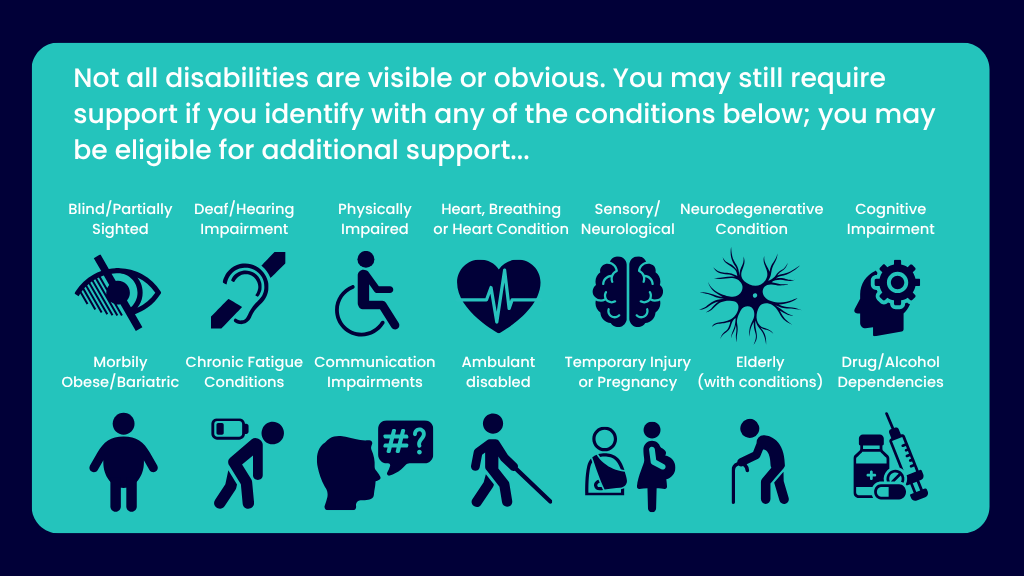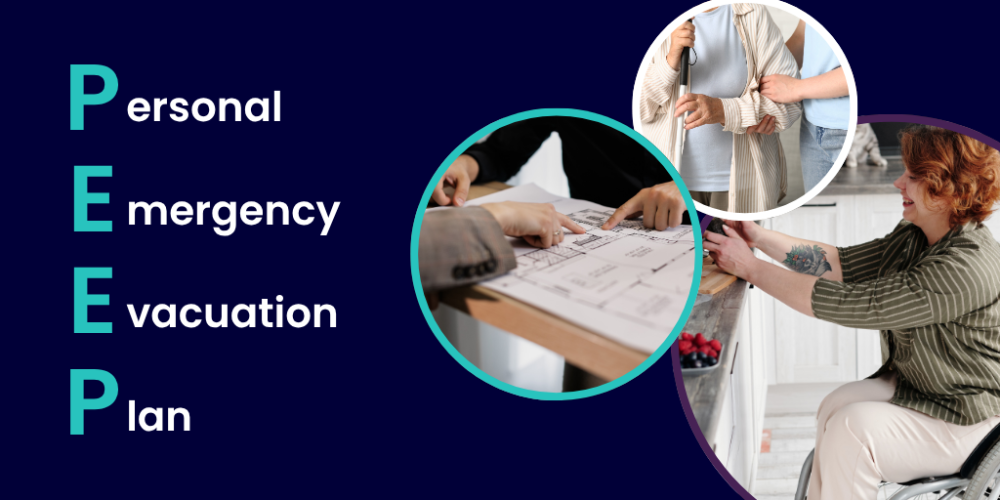When a fire alarm sounds, most people instinctively know what to do – get up, get out, and head to safety. But what if residents aren’t able to get out quickly or safely without help? Perhaps they use a wheelchair, have limited mobility, live with hearing loss, or have a condition that affects their response time. That’s where PEEPs come in.
So, what is a PEEP?
A Personal Emergency Evacuation Plan (PEEP) is a tailored plan that explains how someone who may find it difficult to evacuate independently will get to safety in an emergency.
Each plan is personal and practical – it sets out:
- Who will assist
- What route to take
- What equipment or alerts may be needed
- How communication will work if alarms aren’t seen or heard
PEEPs make sure that everyone, whatever their circumstances, has a safe and supported route out of the building in the event of an emergency.
Why PEEPs Matter
PEEPs aren’t just another form to fill in, they can genuinely save lives. In an emergency, every second counts. For someone who can’t use stairs easily, doesn’t hear alarms, or needs guidance to stay calm, a PEEP ensures that help arrives fast and that everyone knows exactly what to do.
They also help building owners and managers meet their legal duties under the Building Safety Act 2022 and related fire-safety legislation.
What’s Changing – The 2025 Regulations Coming into Force April 2026
The Government has now confirmed new rules under the Fire Safety (Residential Evacuation Plans) (England) Regulations 2025, coming into effect from 6 April 2026.
These new regulations expand who must consider and prepare PEEPs. They apply to:
- High-rise residential buildings (18 metres, or 7 storeys and above), and
- Buildings over 11 metres that operate a Simultaneous Evacuation strategy (where all residents would evacuate together if a fire occurs).
Under the new law, the Responsible Person (such as a managing agent, landlord, or building owner) must:
- Identify residents who may have difficulty self-evacuating.
- Offer those residents a Person-Centred Fire Risk Assessment (PCFRA).
- Prepare a written evacuation statement (PEEP) tailored to that individual.
- With the resident’s consent, share key information with the local Fire & Rescue Service and store a copy in the building’s Secure Information Box (if one is required).
- Review each PEEP at least annually, or sooner if the resident’s situation changes.
These steps reflect lessons from the Grenfell Tower Inquiry, aiming to ensure that every vulnerable resident is known, supported, and has a clear route to safety.
Who Might Need a PEEP?
You don’t need to have a visible disability to qualify for a PEEP. Someone may qualify for a PEEP if they have any of (but not limited to) the below disabilities.
If you think any of these apply to you, even temporarily, you may benefit from having a PEEP in place.

Make Use of “Safe & Well” Visits
Your local Fire and Rescue Service can provide a free Safe & Well visit to help you stay protected at home.
During a visit, fire-service officers can:
- Check and fit smoke alarms or specialist alert devices.
- Review your escape routes and offer safety advice.
- Identify if you might need a PEEP or additional equipment.
It’s quick, free, and could make a big difference in keeping you safe.
How Centrick Supports Residents – How to get a PEEP
At Centrick, we see building safety as more than compliance – it’s about people.
We take the time to understand the needs of every resident who may require additional support. As part of this, we check in quarterly with all identified vulnerable residents to make sure their circumstances haven’t changed. If they have, we update their PEEP accordingly.
If you live in a Centrick-managed building and think you might need a PEEP (or aren’t sure), here’s how we can help:
- Get in touch – email resident@centrick.co.uk or call 03330 124 125.
- We’ll complete a Person-Centred Fire Risk Assessment with you.
- Together, we’ll create your Personal Emergency Evacuation Plan.
All personal data is handled in line with UK GDPR. With your consent, we’ll share relevant information with your local Fire & Rescue Service to ensure you receive help quickly in an emergency.
Working Together for Safer Homes
Fire safety isn’t just about alarms and exits, it’s about understanding the people who live in each building and planning for their needs. At Centrick, we’re committed to creating safe, inclusive communities where every resident has the reassurance that, if the worst happens, they won’t be left behind.
If you are a landlord or operator and would like to learn more about how Centrick’s Building Safety services can help keep residents safe, and keep you compliant, please contact us via the form below.



